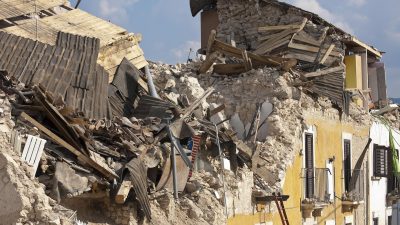Turkey Earthquake 2023: The Disaster That Shook a Nation – Untold Stories, Failures, and the Fight for Survival
Introduction: The Turkey Earthquake of February 2023
On February 6, 2023, at precisely 4:17 AM local time, the earth shook violently beneath the feet of millions in Turkey and Syria. With a staggering magnitude of 7.8, the quake was one of the most powerful to hit the region in decades. The epicenter was near Gaziantep, a major Turkish city that was instantly transformed into rubble. The death toll surged rapidly, and by early February, over 50,000 people had been confirmed dead, with thousands more injured, missing, and displaced. Entire neighborhoods were obliterated, and infrastructure—roads, hospitals, and power lines—was decimated.
But the quake’s reach didn’t stop at Turkey’s borders. Syria—already ravaged by years of civil war—was hit with the same violent tremors, compounding the tragedy in a region already struggling to survive. Cities like Aleppo and Idlib were torn apart, further deepening the humanitarian crisis.
Turkey’s location along the East Anatolian Fault has long made it one of the world’s most seismically active regions. Yet, even with such a clear natural risk, the force and suddenness of this earthquake caught many by surprise, leaving the region woefully unprepared for such an overwhelming disaster. With millions left without homes and survivors buried beneath the rubble, it became painfully clear: the sheer scale of the destruction was beyond what anyone had predicted.
The question that lingers is not just about the quake’s devastation, but whether the world was truly prepared for it. Could better planning, building codes, and disaster response have saved lives? Was the region adequately equipped to handle a catastrophe of this magnitude? Or was there something more? As the global community scrambled to offer aid, the scale of the tragedy raised unsettling questions about Turkey’s ability to recover—and whether the region’s tectonic risks had been properly addressed for years.
1. Controversy: Was the U.S. or NATO Involved in Causing the Earthquake?
As the dust settled from the catastrophic earthquake that struck Turkey and Syria in February 2023, a chilling question began to circulate: could this disaster have been triggered by forces other than nature? While the mainstream narrative focuses on the East Anatolian Fault, a well-known seismic hotspot, whispers of something more deliberate—something darker—have begun to take hold. And it all comes back to the location: the epicenter of the earthquake was strikingly close to Incirlik Air Base, one of NATO’s most strategic military hubs in southern Turkey, home to U.S. forces and critical operations in the region.
Could the earthquake have been a byproduct of military activities? Some have speculated that the U.S. or NATO might have been involved in underground testing, seismic experiments, or even the use of advanced weaponry capable of triggering a seismic event. The sheer proximity of Incirlik to the quake’s epicenter makes this theory impossible to ignore. After all, the U.S. has long been involved in operations that involve high-tech, secretive projects, some of which could potentially have unintended, catastrophic side effects.
What if seismic technology or underground experiments—things the public knows little about—were to blame? Could this earthquake have been more than just an unfortunate natural disaster? Military powers have long had access to technologies that, while not widely discussed, could theoretically trigger earthquakes or even manipulate the earth’s natural forces. In the past, seismic disturbances have been linked to nuclear tests, and while no formal links have been established here, the coincidence of the quake’s timing and its proximity to a military base certainly raises some unnerving questions.
This isn’t the first time people have speculated about the military’s role in influencing the planet’s natural systems. While some argue that these ideas belong to the realm of conspiracy theories, the truth remains elusive, and the speculation continues to grow. Could such powerful nations, with all their covert operations, have pushed the limits of science and nature to a dangerous point? Or was this truly just a violent tremor of nature, with no human hand in its cause?
The unanswered questions surrounding the February 2023 earthquake refuse to fade. The truth may never be fully revealed, but the unsettling coincidence between the earthquake’s epicenter and one of the most strategically important military bases in the world will continue to fuel suspicions. Could this event have been engineered in some way, or is it simply a horrifying accident of nature? As time passes, the mysteries only deepen.
2. Detailed Overview of the Earthquake
- Date & Time: A Catastrophic Moment in History
The earthquake struck on February 6, 2023, at 4:17 AM local time, just before dawn, catching many people in their sleep. This timing, while it gave some residents moments to react, also led to devastating consequences, as many buildings collapsed while people were still in their homes. The early morning hours created additional challenges for rescue operations as visibility was limited, and emergency services were stretched thin in the first few hours following the event. - Epicenter: Gaziantep – A City on the Fault Line
The epicenter was located near Gaziantep, a major city in southeastern Turkey, positioned approximately 33 kilometers north of Syria’s border. Gaziantep, a historically significant city, was severely impacted, with many of its buildings and structures reduced to rubble. The surrounding cities, including Kahramanmaraş, Adıyaman, and Hatay, also faced substantial destruction, making this a regional disaster that spread across southern Turkey. The close proximity of the epicenter to the Syrian border meant that neighboring regions in Syria, particularly Aleppo, also experienced widespread damage. - Magnitude: A Devastating 7.8 on the Richter Scale
At a magnitude of 7.8, the earthquake was one of the most powerful ever recorded in Turkey in over 80 years. The strength of the earthquake caused widespread destruction, particularly in cities located close to the epicenter. Such a powerful quake can cause the ground to shake violently for minutes, leading to severe damage to buildings, roads, and infrastructure. The tremor was so intense that it was felt across vast areas, including neighboring countries like Lebanon and Cyprus, with aftershocks continuing to impact the region for days after the initial event. - Tectonic Plates: The Cause of Turkey’s Earthquake Vulnerability
This earthquake occurred along the East Anatolian Fault, a major fault line that runs across Turkey, causing it to be particularly earthquake-prone. The movement of tectonic plates in the region creates a constant threat of seismic activity. The collision between the Arabian Plate and the Eurasian Plate is responsible for the high frequency of earthquakes in this area. This fault line has been responsible for past major earthquakes, making the region one of the most seismically active zones in the world, and highlighting the vulnerability of the population to such natural disasters.
3. Geographical Impact
- Affected Regions: The earthquake primarily impacted southeastern Turkey, with Gaziantep, Kahramanmaraş, Adıyaman, and Hatay being among the hardest-hit cities. These areas suffered the most extensive damage, with many buildings collapsing, causing widespread destruction. The tremors also affected other parts of Turkey, though with less intensity. The surrounding rural areas and smaller towns were not spared, with entire villages being buried under rubble.
- Neighboring Countries Impact: The earthquake’s effects were not confined to Turkey alone. It also significantly impacted northern Syria, especially near the Turkish-Syrian border. Cities like Aleppo and Idlib in Syria were heavily damaged, and the region experienced similar destruction due to the quake’s strong tremors. The geopolitical situation in Syria made rescue and relief efforts even more challenging, as the region was already struggling with ongoing conflict and limited resources. The earthquake intensified the humanitarian crisis, further complicating the situation for displaced populations.
4. Damage and Destruction
The damage caused by the February 2023 earthquake in Turkey and Syria was catastrophic, leaving entire cities in ruins. In Turkey, the southeastern regions, including Gaziantep, Kahramanmaraş, and Adıyaman, were the hardest hit, with buildings, bridges, and vital infrastructure reduced to rubble. Thousands of buildings collapsed, trapping residents inside, and the loss of life was staggering. The Turkish government declared a state of emergency as entire neighborhoods were wiped out, and essential services, like electricity, water, and communications, were severely disrupted.
In addition to the widespread structural damage, the earthquake caused significant casualties. The official death toll quickly rose into the tens of thousands, with thousands more injured or missing. The sheer scale of the destruction left rescue operations struggling to keep up with the needs of the affected population. Hospitals were overwhelmed, and temporary shelters had to be set up to house the displaced individuals. The earthquake’s intensity made it difficult to assess the full scope of the damage in the immediate aftermath, but it became clear that recovery would be a monumental task.
The economic impact was equally severe, as the affected regions were home to key industries and cultural sites. The agricultural sector, a critical part of Turkey’s economy, was heavily disrupted, and local businesses were either damaged or destroyed entirely. Additionally, historical and cultural sites, some of which had stood for centuries, were damaged or completely lost. The loss of these landmarks was not just a blow to Turkey’s heritage but also a significant setback for tourism in the region.
The destruction was also felt beyond buildings and infrastructure. Roads, airports, and railway lines were all severely impacted, making the delivery of aid and supplies much more challenging. This widespread damage underscored the vulnerability of the region to such powerful seismic events and highlighted the urgent need for improved building practices and disaster preparedness in the future. The recovery process, both in terms of rebuilding physical structures and restoring the economy, would take years, leaving an indelible mark on the affected populations.
5. Response and Rescue Efforts
The first few hours after the earthquake were chaos—sirens blaring, people screaming, dust filling the air like a thick, suffocating fog. The streets of Gaziantep and Kahramanmaraş were unrecognizable, littered with debris, twisted metal, and bodies—some moving, some heartbreakingly still. The world watched in horror as videos surfaced—parents digging through the rubble with bare hands, children crying for their families, survivors trapped under slabs of concrete, whispering for help, their voices growing weaker by the second.
Rescue teams were mobilized, but the scale of the disaster was staggering. The Turkish government declared a national emergency, and thousands of rescue workers, police officers, and military personnel were sent into the ruins, but the question loomed—was it enough? Roads were blocked, hospitals overflowing, and the freezing winter air made survival even more impossible. The first 24 hours were crucial, yet too many people were still waiting—waiting for someone to hear their muffled cries, waiting for a miracle that might never come.
And then came the international response. Planes from dozens of countries landed, bringing aid, rescue dogs, heat-detecting equipment, and humanitarian workers. The world united, but the clock was ticking mercilessly. News reports showed breathtaking rescues—teams pulling out survivors who had been buried alive for days, their faces covered in dust but their eyes wide with disbelief. Yet, alongside those victories were devastating losses—rescuers finding families huddled together in their final moments, hands clasped, frozen in time beneath the ruins of what was once their home.
The frustration grew. Survivors in some areas claimed they had been abandoned, their calls for help going unanswered for days. Supplies were running low—food, water, medicine. Makeshift shelters popped up, but they couldn’t house everyone. Children shivered in the cold, mothers wept over lost loved ones, and elderly people sat in silence, their homes and histories reduced to rubble. Was this response enough? Could anything ever be enough?
Then, as if the horror wasn’t already unbearable, the aftershocks came. More buildings crumbled. More people were buried. Rescuers had to pause, terrified that the ground beneath them would give way. And yet, they kept digging, kept searching, because somewhere beneath those ruins, there was still life. Somewhere, someone was still holding on, praying that the next pair of hands reaching through the rubble would be there to save them.
6. The People Left Behind: Stories of Survival and Loss
Some called it a miracle; others called it fate. A baby, barely a few weeks old, pulled out alive after being buried for over 100 hours. A mother who shielded her child with her own body, her heartbeat long gone, but her sacrifice ensuring the little one lived. An old man, trapped in darkness, surviving only on rainwater dripping through the cracks in the concrete.
Yet for every life saved, hundreds were lost. Families were ripped apart in an instant. Some survivors searched frantically through the ruins, screaming names, listening for familiar voices. Others sat in silent shock, staring at what was once their home, their workplace, their entire world—gone in a single, merciless moment.
With shelters overfilled and aid unable to reach every corner of the devastation, many were left without food, water, or even a blanket to fight the freezing winter air. Desperation turned into anger. Where was the help? Why were some cities getting aid faster than others? The earthquake took lives, but for those who survived, the battle was far from over.
7. A Race Against Time: The Rescue That Couldn’t Come Fast Enough
Every second mattered. The first 72 hours were the golden window for survival, but collapsed roads, destroyed infrastructure, and severe weather slowed everything down.
Rescue teams worked tirelessly, but they were stretched too thin. Some cities had teams and equipment within hours; others waited in agony as bodies piled up beneath the rubble. Volunteers arrived from across Turkey, desperate to help, but without proper tools, they could only dig with their hands. The frustration grew. Loved ones called for help, but there were too many cries and not enough rescuers to hear them all.
International teams came in waves—specialists from Japan, the U.S., Germany, and dozens of other countries—but was it too late? Every news headline showed stories of last-minute rescues, but behind the cameras were hundreds of tragedies—voices that faded into silence, fingers that loosened their grip, eyes that closed before help could reach them.
8. The Silent Killers: Aftershocks and the Invisible Threat
As if one disaster wasn’t enough, the earth refused to stay still. The first massive shock was only the beginning. Aftershocks—some nearly as powerful as the initial quake—ripped through the region, bringing down buildings that had barely been holding on.
Survivors, already traumatized, lived in constant fear. Every tremor sent people running for open ground, screaming in terror. In hospitals, doctors had to rush patients outside mid-treatment, afraid the walls around them might collapse. The psychological toll was immeasurable—how do you rebuild when the ground beneath you never stops shaking?
And then, the secondary disasters followed. Landslides buried entire roads. Water pipelines burst, contaminating drinking supplies. Diseases started spreading in makeshift camps. The earthquake had destroyed the land, but the real suffering was just beginning.
9. Lessons from the Rubble: Could This Have Been Prevented?
When the dust settled, the real question began to surface: Did this have to happen?
Turkey sits on major fault lines, and experts had warned for years that a disaster of this magnitude was inevitable. So why weren’t the buildings stronger? Why did so many structures crumble like sandcastles? Investigations began, revealing a dark truth—corruption, ignored safety regulations, and poor construction practices had turned these cities into death traps.
While some buildings stood strong, others collapsed instantly. Why? Because shortcuts had been taken. Cheap materials. Weak foundations. Buildings that should have been earthquake-resistant were nothing more than ticking time bombs. The earthquake was natural—but the scale of the disaster? That was human-made.
10. The World Reacts: Aid, Politics, and a Race to Help
The world watched in shock, and help poured in. Governments, charities, and volunteers sent money, food, and emergency supplies. Some countries sent search-and-rescue teams; others dispatched medical personnel and engineers. For a brief moment, political tensions were set aside—humanity took center stage.
But not all aid reached those who needed it most. Corruption, logistical nightmares, and blocked roads delayed critical supplies. Some areas had more help than they could handle, while others remained in the shadows, waiting, suffering. The world gave generously, but bureaucracy and inefficiency meant that much of it didn’t arrive where it was needed in time.
Despite this, acts of kindness emerged. Ordinary people raised millions in donations. Refugees, who had nothing, gave their food to earthquake survivors. Strangers opened their homes to the homeless. Even in the face of unimaginable tragedy, human resilience shone through.
11. Hope in the Ashes: Rebuilding Lives, One Brick at a Time
The earthquake took everything—but not the spirit of those who survived.
Amidst the wreckage, people began to rebuild. Volunteers helped clear the rubble, neighbors shared whatever they had left, and engineers worked tirelessly to design safer, stronger structures. But recovery wouldn’t be easy. The scars ran deep—physically, emotionally, and economically.
Children who lost their parents now had to face an uncertain future. Business owners who watched their life’s work crumble had to start again from nothing. The government promised change, but would it come fast enough? Or would the same mistakes be made again, setting the stage for another disaster decades from now?
One thing was clear: the earthquake had reshaped more than just the landscape—it had forever changed the lives of millions.
FAQs: What Everyone Wants to Know
1. Why was the Turkey earthquake in 2023 so devastating?
The magnitude was massive (7.8), but what made it worse was the poor building construction, outdated infrastructure, and extreme winter conditions that hampered rescue efforts. The high population density in affected areas also contributed to the disaster’s scale.
2. How many people died in the Turkey earthquake of February 2023?
As of official reports, over 50,000 people lost their lives, with tens of thousands more injured. However, experts believe the real number could be much higher due to unreported cases.
3. Could this earthquake have been predicted?
While scientists can predict earthquake-prone regions, they cannot forecast the exact time or date of an earthquake. However, warnings about the East Anatolian Fault’s activity had been issued years before, yet preparations were insufficient.
4. What is Turkey doing to prevent another disaster like this?
The government has promised stricter building regulations, improved emergency response systems, and better infrastructure. However, skepticism remains—will real action be taken, or will corruption and negligence allow history to repeat itself?
5. How can people help the victims of the Turkey earthquake?
Donations to reputable humanitarian organizations, volunteering for aid missions, and spreading awareness about earthquake preparedness can make a difference. Many survivors still need support, and rebuilding efforts will take years.
References & Sources:
“Türkiye/Syria: Earthquakes – Feb 2023” ReliefWeb
“2023 Turkey-Syria Earthquake”
Center for Disaster Philanthropy
“2023 Turkey and Syria earthquake: one year on”
Red Cross
“A look at events surrounding the devastating earthquake that hit Turkey and Syria”
Associated Press News
“Türkiye and Syria earthquakes”
World Health Organization (WHO)
“Still in ruins: the 2023 Turkish earthquake – then and now”
The Guardian
YT links:
M7.8, 7.5, 6.0 and 120 more Earthquakes hit Turkey and Syria in one day!
Moment second earthquake hits Turkey caught on live broadcast
Global National: Feb. 20, 2023 | Turkey, Syria under renewed stress after 2 new earthquakes




